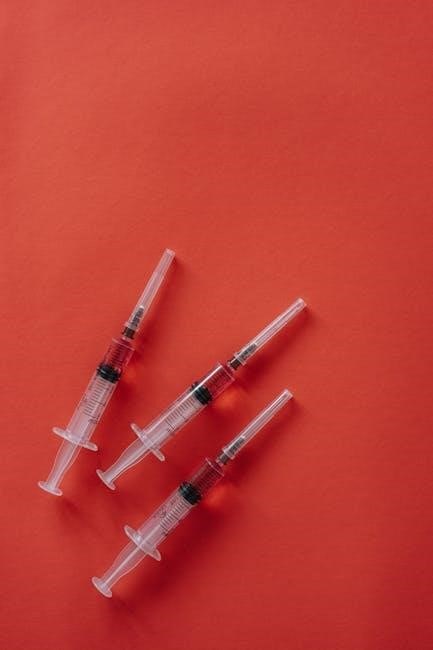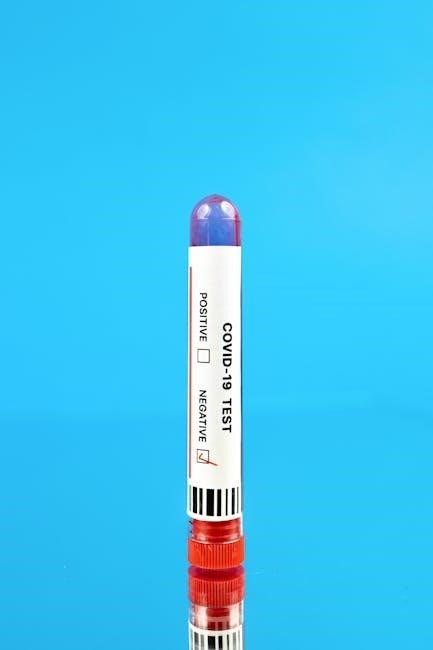Fluoro guided injections are medical procedures using fluoroscopy technology to guide injections, providing accurate placement and reducing complications, with benefits including reduced risk of injury and improved patient outcomes, as reported by medical professionals and researchers online.
History of Fluoro Guided Injections
The history of fluoro guided injections dates back to the early 20th century, with the first recorded use of fluoroscopy in medical procedures.
The technique was initially used for diagnostic purposes, but it soon became apparent that it could also be used to guide injections.
In 1933, Dogliotti described the use of cervical epidural steroid injection, employing the interlaminar route, as a treatment for cervical radicular pain.
This marked the beginning of fluoro guided injections as a treatment option for various medical conditions.
Over the years, the technique has evolved, with advancements in technology and the development of new equipment.
Today, fluoro guided injections are a common procedure in many medical specialties, including pain management, orthopedics, and rheumatology.
The use of fluoroscopy has improved the accuracy and safety of injections, and it continues to play an important role in the development of new treatments.
The history of fluoro guided injections is a testament to the evolution of medical technology and the ongoing quest for improved patient outcomes.
Medical professionals and researchers continue to explore new applications for fluoro guided injections, and the technique remains an essential tool in modern medicine.
Benefits of Fluoro Guided Injections
The benefits of fluoro guided injections are numerous, with improved accuracy and reduced risk of complications being the most significant advantages.
The use of fluoroscopy allows for real-time visualization of the injection site, enabling medical professionals to deliver the medication precisely where it is needed.
This accuracy reduces the risk of unintended injury or complications, resulting in better patient outcomes.
Additionally, fluoro guided injections can be performed quickly, reducing the exposure time to radiation and minimizing the risk of adverse reactions.
The benefits of fluoro guided injections also include reduced pain and inflammation, as the medication is delivered directly to the affected area.
This targeted approach can lead to faster recovery times and improved mobility, making it an attractive treatment option for patients.
Overall, the benefits of fluoro guided injections make it a valuable tool in the treatment of various medical conditions, and its use is becoming increasingly widespread.
Medical professionals are recognizing the advantages of fluoro guided injections, and it is likely to remain a popular treatment option for years to come.

Procedure of Fluoro Guided Injections
Fluoro guided injections involve a medical professional using fluoroscopy to guide the injection, ensuring accurate placement and minimal complications, with a focus on patient safety and effective treatment outcomes always.
Preparation for the Procedure
Preparation for fluoro guided injections typically involves a thorough medical evaluation, including a review of the patient’s medical history and current medications. The patient will be asked to provide informed consent and will be educated on the procedure, including the potential benefits and risks. A board-certified radiologist will oversee the procedure, ensuring that the patient is properly positioned and prepared for the procedure. The patient will be asked to change into a gown and remove any jewelry or clothing that may interfere with the procedure. The radiologist will also use fluoroscopy to guide the injection, ensuring accurate placement and minimal complications. The patient will be monitored closely during the procedure, and the radiologist will be available to answer any questions or concerns. The preparation process is crucial to ensuring a safe and effective procedure, and the radiologist will take the time to ensure that the patient is properly prepared. The goal of preparation is to minimize risks and ensure optimal outcomes.
Role of Fluoroscopy in Guided Injections
Fluoroscopy plays a crucial role in guided injections, providing real-time imaging of the injection site. The use of fluoroscopy allows for precise placement of the needle, reducing the risk of complications and improving the effectiveness of the procedure. The fluoroscopic equipment is designed to produce high-quality images, enabling the radiologist to visualize the target area and guide the needle to the correct location. The real-time imaging provided by fluoroscopy also allows the radiologist to make adjustments as needed, ensuring accurate placement of the injection. Additionally, fluoroscopy enables the radiologist to verify the correct placement of the needle, reducing the risk of misplacement and improving patient outcomes. The use of fluoroscopy in guided injections has become a standard practice, and its role is essential in ensuring the safety and efficacy of the procedure. By providing real-time imaging, fluoroscopy enables radiologists to perform guided injections with precision and accuracy, leading to better patient outcomes;

Risks and Complications of Fluoro Guided Injections
Risks and complications include infection, bleeding, and nerve damage, requiring careful consideration and management by medical professionals to minimize adverse effects and ensure patient safety always online.
Minimizing Radiation Exposure
Minimizing radiation exposure is crucial during fluoro guided injections, and medical professionals take various measures to achieve this goal. The equipment used for fluoroscopy is designed to minimize radiation exposure to both the patient and the healthcare provider. This is achieved through the use of low-dose X-ray technology and specialized shielding. Additionally, the procedure is performed quickly, which further reduces the exposure time. The radiologist uses the minimum amount of radiation necessary to obtain the required images, and the patient is positioned in a way that minimizes exposure to sensitive areas. By taking these precautions, the risks associated with radiation exposure are significantly reduced, making the procedure safer for the patient. The use of fluoro guided injections with minimal radiation exposure has become a standard practice in medical procedures, and it is constantly evolving to ensure the best possible outcomes for patients. The importance of minimizing radiation exposure cannot be overstated.
Importance of Staying Up to Date with Best Medical Practices
Staying up to date with best medical practices is essential for radiologists performing fluoro guided injections. The medical field is constantly evolving, with new techniques and technologies being developed regularly. Radiologists must stay current with the latest research and guidelines to ensure they are providing the best possible care for their patients. This includes participating in ongoing education and training, attending conferences and workshops, and reading industry publications. By staying up to date, radiologists can improve patient outcomes, reduce complications, and provide more effective treatments. The importance of staying current with best medical practices cannot be overstated, as it directly impacts the quality of care provided to patients. Radiologists who stay up to date with the latest developments in fluoro guided injections can provide better care and improve patient outcomes, which is the ultimate goal of medical practice. This requires a commitment to ongoing learning and professional development.

Techniques for Safe Access
Radiologists use various techniques for safe access during fluoro guided injections, ensuring accurate placement and minimizing risks, with a focus on patient safety and effective treatment outcomes, using specialized equipment and methods.
Lower Extremity Fluoroscopically Guided Procedures
Lower extremity fluoroscopically guided procedures involve injecting medications into joints and soft tissues in the hips, knees, ankles, and feet. This approach allows for precise placement of medications, reducing the risk of complications and improving treatment outcomes. Radiologists use fluoroscopy to visualize the target area, ensuring accurate needle placement and delivery of medication. The procedures are typically performed on an outpatient basis, and patients can usually resume normal activities shortly after the injection. The use of fluoroscopy in lower extremity procedures has been shown to be effective in reducing pain and inflammation, and improving functional ability. By using specialized equipment and techniques, radiologists can safely and effectively perform these procedures, providing relief for patients with a range of conditions, including arthritis, tendinitis, and bursitis. Overall, lower extremity fluoroscopically guided procedures offer a valuable treatment option for patients with lower extremity pain and inflammation.

on Fluoro Guided Injections
Fluoro guided injections provide accurate medication placement, reducing complications and improving outcomes, as concluded by medical experts and researchers, with benefits and risks carefully considered in patient treatment plans always.
Future of Fluoro Guided Injections
The future of fluoro guided injections is promising, with ongoing research and advancements in technology expected to improve outcomes and reduce complications.
Medical professionals and researchers are continually evaluating and refining techniques, leading to improved patient care and treatment options.
New developments in fluoroscopy and injection technologies are anticipated to enhance the accuracy and safety of these procedures, allowing for more effective treatment of various conditions.
As the field continues to evolve, it is likely that fluoro guided injections will become an even more valuable tool in the management of pain and other conditions, with potential applications in new areas of medicine.
Overall, the future of fluoro guided injections holds much promise, with expected advancements in technology and technique leading to improved patient outcomes and expanded treatment options, and further research is needed to fully realize their potential.
